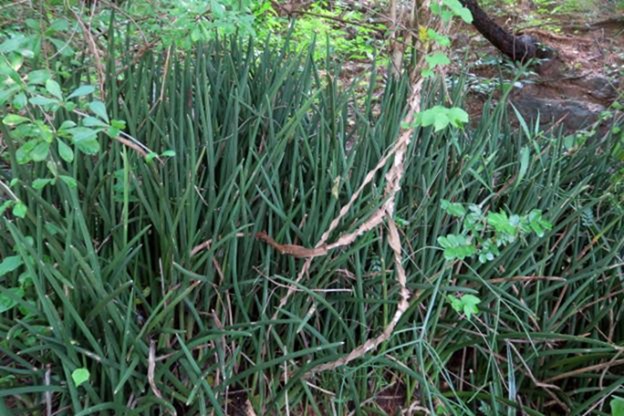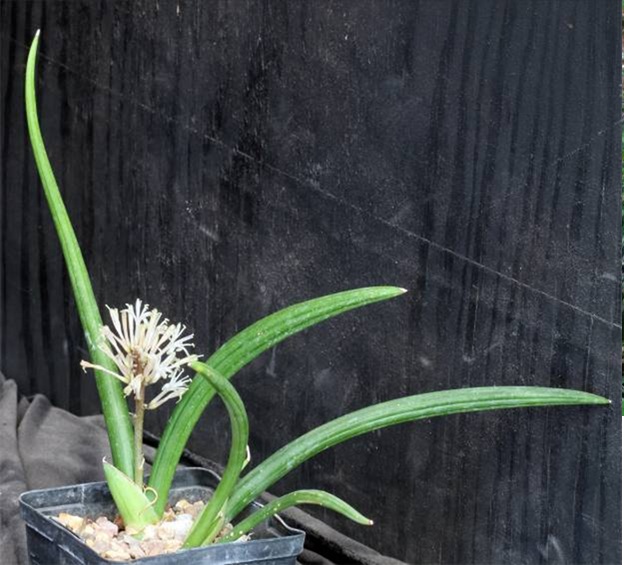| Protologue: |
Revue Horticole 33: 449 (1861). |
| Subgenus: |
Sansevieria |
| Group: |
Sansevieria canaliculata |
| Etymology: |
The epithet refers to the “channeled, grooved” leaves. |
| Distribution: |
Madagascar, Comores, Northern Mozambique, and Tanzania. |
| Brief Description: |
This acaulescent and rhizomatous species forms dense stands of cylindrical, grooved leaves that are slightly rough. Typically, 1 – 2 are spaced about 5 cm apart along the rhizome, and these leaves are erect or slightly curved with 5 – 6 shallow longitudinal grooves. The leaves are at most 10-15 cm tall tall in dwarf forms to 75 cm high and 1-2 cm thick in the larger forms. The leaves are yellow-green to dull dark green and have a whitish hard tip. The inflorescence is subcapitate and is 5-16 cm tall with 3 flowers per cluster. |
| Similar Species: |
Sansevieria canaliculata is recognizable for the longitudinal channels for which it is named as well as its tendency to grow in large, dense clumps in habitat. Sansevieria pfennigii also has these channels but is a slightly smaller species with a roughened epidermis that tends to be greyer than S. canaliculata as well as slightly different floral characteristics. Sansevieria bacularis is much taller and yellow-green with a smooth epidermis. No other species in the genus can be confused with these two species. |
| |
| |

Sansevieria canaliculata in a large clump just above high-tide level on coral rocks near Lindi, Tanzania.
|
| |

Sansevieria canaliculata flowering in cultivation.
|

